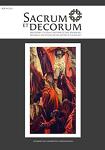Nieistniejący kościół franciszkanów w Jaśle i jego twórca Michał Łużecki. Przyczynek do biografii
The no longer existing Franciscan Church in Jasło and its designer Michał Łużecki. A contribution to his biography
Author(s): Andrzej LaskowskiSubject(s): Cultural history
Published by: Wydawnictwo Uniwersytetu Rzeszowskiego
Keywords: architecture; Galicia; Jasło; Lviv; Michał Łużecki
Summary/Abstract: The neo-Gothic Franciscan church in Jasło was built between 1903 and 1904 to the design of Michał Łużecki, a Lviv architect, who also designed several neo-Gothic elements in the interior. It was the only sacred structure outside Lviv designed by the architect. Almost completely destroyed in WWII, it was a modest neo-Gothic church, consisting of a tower, a nave, and a chancel enclosed on three sides; there was no transept. Churches of this type were popular in Germany, and some examples are to be found in Poland as well. Studies suggest that Michał Łużecki was an architect of his times, straddling historicism and modernism. His knowledge and inventiveness allowed him to draw from a variety of neo-stylistic forms; his creative output includes designs inspired by the Middle Ages (the neo-Gothic church in Jasło) and modern architecture (the neo-baroque Blessed Virgin Fountain in Lviv), as well as free interpretations of historical forms, in which a stylistic costume is used to serve a modern function (e.g. the water tower at the Eastern Trade Fair in Lviv). Łużecki was equally skilful in the use of various materials, such as stone, brick and wood (e.g. the celebrated Hunting Pavillion at the Fair). He did not shy from conservation tasks. Deep down, however, he was an artist on a constant quest for new means of expression, conscious of the impending artistic breakthrough; the designs and projects he undertook in the 20th century were already influenced by the spirit of art nouveau. Throughout his life, Łużecki enjoyed widespread esteem and authority, first as an employee and later as the director of the Urban Construction Office in Lviv, and a jury member in numerous architecture contests.
Journal: Sacrum et Decorum. Materiały i studia z historii sztuki sakralnej
- Issue Year: 2011
- Issue No: 4
- Page Range: 20-43
- Page Count: 24
- Language: Polish

